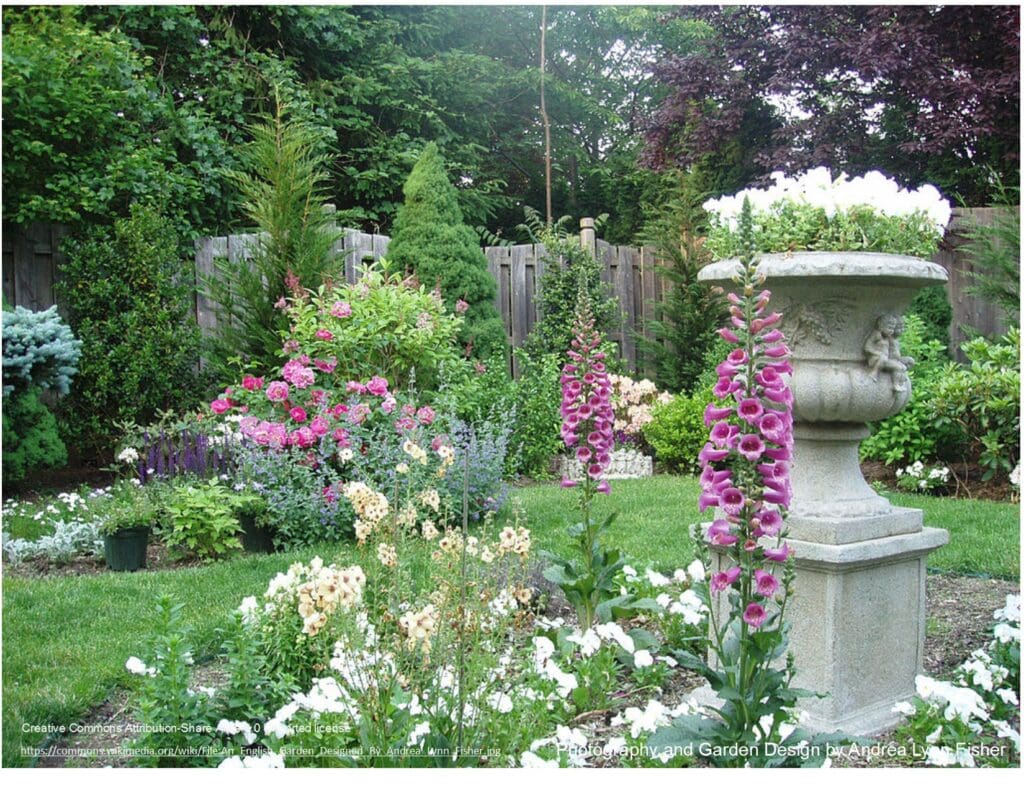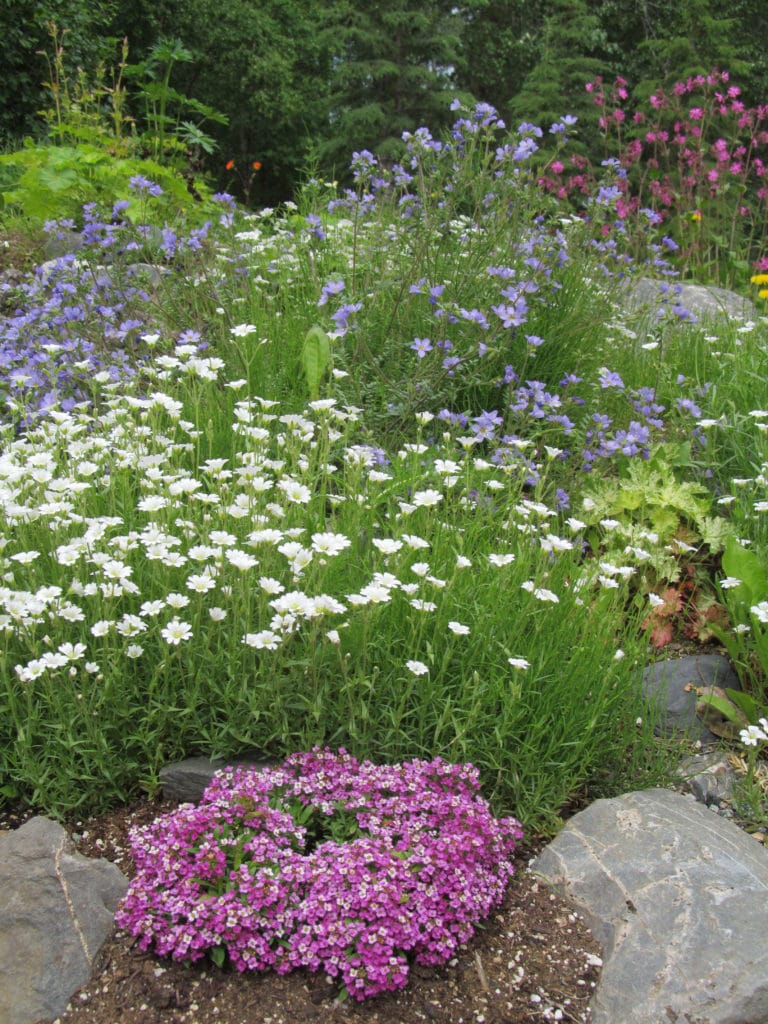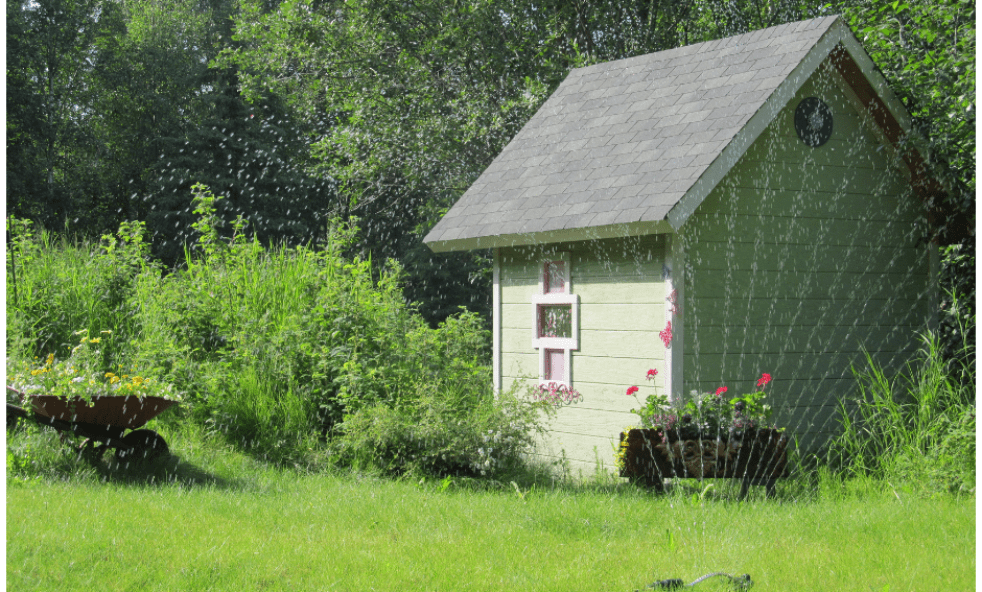
How to Shop for Perennials at the Garden Center
This article is for those who are new to perennials and want to learn which ones to select for your yard or garden. I’m keeping it simple because I want you to have fun trying a few of them in your own garden without getting bogged down in too many complexities.
But, I warn you, once you get started with perennials, you’ll want to experiment further and learn even more!
Perennials give me something to look forward to every spring. They re-emerge after a long winter, and it seems in no short time they’re full of cheerful, bright flowers. Even before my annuals are hardened off and ready to plant.

A few things to know about perennials
1) Perennials are more expensive than flowering annuals and are sold in single pots. The benefit is that a perennial comes back year after year. Most are easily dividable after a few years or produce lots of seed. That means ‘freebies’ to plant elsewhere or to pot up for a friend.
2) They have a specific ‘set’ bloom cycle (spring, late spring, mid-summer or late summer) and then, that’s it. They are done flowering for the season. Perennials do not bloom continually as annuals do.
3) If you see perennials at the garden center that don’t show flowers, it’s usually because they have either completed their bloom cycle or have not started blooming yet. Also, not all perennials produce a flower; or at least a spectacular one. These are the types that are valued more for their unique foliage.
Perennials at the garden center
If you are new to perennials, I always recommend shopping at your local nurseries rather than at the box stores. There are two reasons for this:
1) You’re more likely to find knowledgeable staff who can answer questions you may have about a certain plant. This is their area of expertise!
2) Local nurseries carefully select flowers, trees and shrubs that will perform well in your particular planting zone. (scroll down for more on zones) Sometimes, local nurseries offer free classes or have helpful handouts that you can take home to read later.
While the box stores carry perennials, they don’t always have control over which plants they receive. They may end up with plants that are not suitable for your climate zone, even though they are still in the ‘perennial’ category. They’ll do fine through the summer, but won’t come back the following year. That’s why it’s so important to pay attention to the climate zone noted on the plant’s ID tag.

Know your climate zone
The climate “hardiness” zone for plants is a good general guide and “rule of thumb” for selecting perennials at the garden center. A plant’s “hardiness” refers to its ability to survive through the winter. Some types of perennials and shrubs are super tough and will survive in regions where temperatures plummet to 30 below. (zone 3) While others are a bit more tender, preferring that it not get any colder than 30 above (zone 9).
Of course, your local nurseries will only carry perennial flowers that are known to do well in your area. They want customers like you to have success. Even so, you should always check the tag. Besides, there are micro-zones that will make a difference too, in your perennial plant selections.
For example, you may live in an area that gets slightly different weather than other parts of your state. Maybe you’re in a cold spot. Or a drier spot. Or a wet spot. Your local nursery knows what grows where. They can provide some advice and terrific tips, so, don’t hesitate to ask!
Don’t know your zone? It’s easy! Use the map or visit the link below to learn your plant hardiness zone. After you click the link, there’s a place to enter your zip code at the top left.
U.S. Department of Agriculture Interactive Map

Read the tag that comes with the plant.
It’s easy to gravitate towards an attractive or unique looking plant. But when selecting perennials at the garden center, don’t just go by how pretty the flower is. Always read the back of the plant’s ID tag in the pot. Yes, it’s small print. But trust me, you need this information!
The tag will tell you if the plant you’ve got your eye on is ideal for the conditions of your yard or garden. Most perennials love the sun, but there are some that prefer shade where it’s moist and cool. If you’re looking for something to put in a shady spot by the side of the house, then a plant that likes full sun and good drainage, where it’s not too damp, isn’t going to do very well in that location.

Selecting perennials at the garden center
Perennials in full bloom sell quickly. But remember, too, they’ve already been blooming a few weeks in transit from a plant nursery to your local greenhouse. That means it may not have much time left by the time it gets to your yard or garden.
Therefore, always look for one that seems to be a little behind schedule. One that is still setting buds that haven’t opened yet. You’ll get more bloom time that way.
Look for healthy plants
Local greenhouses pride themselves on having healthy plants. But they do get damaged by being handled by customers. Perennials at the garden center get droopy in the hot sun if they didn’t get enough water. A healthy plant will look healthy. It will feel firm and not mushy in the center core. The stalks will be sturdy and the leaves will have a consistent color.
Look for bugs
Despite best efforts, bugs are a fact of life and can still be present on a plant. Most perennials are sold outside, so bugs can come from nearby plants and trees and aren’t the fault of the nursery. Always inspect your plant before you buy it. Hold the plant up and look closely under the leaves and stems. You don’t want to take any home any hitchhikers!
Questions to ask
There’s always an important thing or two about a plant that might not be noted on the tag. For instance:
1) Growth habit. Is it a ‘mounding’ type? Or does it spread out? If it’s a creeper or vining plant, is it a fast or slow spreader?
Some plants grow fast and will rapidly take over the garden if you don’t keep them in check. They’ll stake their claim at the expense of other plants and run roughshod over them. It doesn’t matter how pretty it is if you don’t want all the hard work of trying to control it all the time. You might just end up pulling it out altogether. Thus, a waste of money, too.
On the other hand, if you have a large area and need something that spreads faster to fill in space, then maybe it’s exactly the plant you want.
2) Bloom time. Sometimes this information is on the back of the tag. If not, this is a good question to ask. If you don’t see flowers on the plant, then its either completed its blooming cycle, or the blooms are yet to come!
3) How easy is it to grow? Perennials are more expensive than annuals, so if you’re new to gardening, start with the varieties that are easiest to grow.
For the most part, the majority of perennials and shrubs at your local greenhouse will be standards. They’re “best sellers” because they are easy to grow and absolutely dependable year after year. Even in less than ideal conditions. Again, don’t be shy about asking at the greenhouse.

DON’T FORGET YOUR FREEBIE! Scroll down just a bit to sign up. You’ll receive “10 Artistic Ways to Make Your Yard & Garden Beautiful”. Be part of our art & garden lovers community.
Local Garden Resources
Your local garden club is an excellent resource. I recommend joining their Facebook group. These are people with a strong desire to help others learn to garden. They typically give classes, help pinpoint problems, insects, plant disease, and can help you troubleshoot your perennials. Many garden clubs sponsor Spring Garden shows where you can talk to the experts in person.
In addition, some perennial lovers have niche-specialties in rock gardens or local wildflowers, if you find your interests wandering off the beaten path.
Final Thoughts
I hope you’ll add some perennials to your garden this summer. Although they are more expensive in the beginning, you get more bang for the buck in the long run, because they’ll be back year after year. And, after a while, you can divide it and have even more!
Get acquainted with your plant climate zone and the conditions around your home before you make your purchases so you get back home with happy campers. And do make your first stop at your local greenhouse or nursery. Get an idea of which perennials from the garden center are easiest to grow and will perform the best in your area.
But, I’ll warn you, again. Once you get started with perennials, you might just find yourself with a new passion!

MIAG Editor
Related topics you may enjoy
Harden off Your Flowers the Easy Way
Meet Alaska’s Wildflowers of the Spring
Unique, non-traditional Ground Covers
The form you have selected does not exist.

